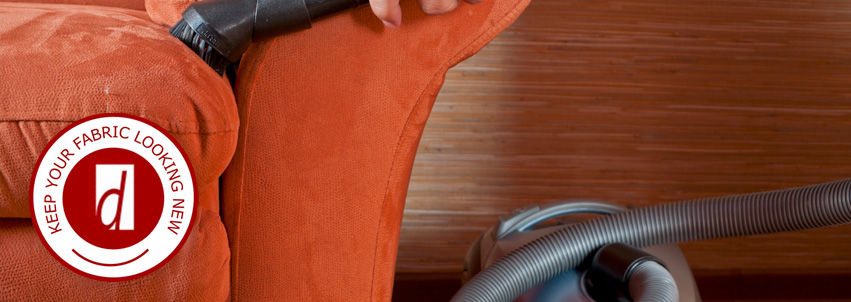
CLEANING AND MAINTENANCE
Fabric Cleaning Codes
Professional cleaning is always the safest method of cleaning for any fabric or faux leather, but in case you wish to do it yourself, here is what the cleaning codes, which can be found on the patterns detail page, mean:
S: Solvent based upholstery cleaners only.
You should not use water, club soda or other water based upholstery cleaners or shampoo on these upholstery fabrics. Most upholstery fabrics are “S” coded. Using water based cleaners on “S” coded fabrics, can create permanent water stains. For spot cleaning, it is important to test the cleaner in a hidden area, and use a mild water free solvent cleaner. After spot cleaning, you should dry immediately using a hair dryer. If the fabric has a nap like velvet or suede, use a soft brush to maintain its appearance.
W: Water based upholstery cleaners only
Only water based upholstery cleaners should be used on these materials. Distilled water should be used over tap water in order to avoid rings or fading. Solvent based cleaners could permanently wreck your fabric or faux leather.
WS: Water based upholstery cleaners only
Water or solvent based upholstery cleaners can be used.
Fabric Cleaning and Maintaining Tips
Cleaning and routine maintenance is essential to keeping your beautiful fabric or faux leather looking new.
- Vacuum your furniture often. Use the small brush attachment to your vacuum to pick up surface dust to prevent settling.
- Do not put your fabric or faux leather in the washing machine. Most fabrics are not made for cleaning them this way. Professional cleaning is a much better alternative.
- Club soda is not a cure-all solution. Club soda is essentially water, and with cleaning codes “S,” the club soda can actually make the stain worst.
- Flip and rotate your cushions regularly for more even wear, and to increase the longevity of your fabric.
- Do not rub or scrub stains, but rather blot up stains with a towel.
- Annual professional cleanings will make your furniture look its best.
- Never spot clean using products that contain bleach or alcohol.
- Most upholstery fabrics are not meant to be put in the washing machine. Having the material professionally cleaned is a much safer alternative. This includes slipcovers.
Indoor/outdoor Fabric Cleaning and Maintaining Tips
These unique fabrics are great for indoor and outdoor use, but there are important tips to maintaining them. Indoor/outdoor fabrics are stain and water resistant, but they still need to be maintained. Stains can be cleaned using mild soap and water, but never with bleach or alcohol. These fabrics are water and fade resistant, but there are no such thing as water or fade PROOF fabric. It is important to keep these fabrics out of direct sunlight as much as possible in order to prolong the life of your fabric. In addition, flipping and rotating cushions, will help increase their life.
Recycled Leather and Polyurethane Cleaning and Maintaining Tips
Spills and stains to your recycled leather should be cleaned up as they appear. Ordinary dirt, smudges and water-soluble stains such as coffee, tea, juice, soft drinks, milk, beer, and wine can be removed with mild soap and water. Use a clean cloth or soft sponge to gently wipe the stain with soapy water. It is important to remove any remaining soap solution by wiping the area with a cloth and clean water. After, dry the surface with a soft lint-free cloth or towel. Avoid cleaners containing abrasives, as these can damage the recycled leather’s look. Difficult stains can be cleaned using 50% solution of Isopropyl Alcohol and water. Rinse the cleaned area with water after applying with the alcohol solution. Dry with a clean, lint-free cloth. To disinfect recycled leather, use a solution of 5 parts water to 1 part bleach. Wipe the area with a cloth and clean water, and dry thoroughly with a soft lint-free cloth or towel.
Recycled leather, like all faux leathers, should be kept out of direct sunlight as much as possible. All of our recycled leathers meet or exceed the indoor upholstery standard for fade resistance.
Vinyl Cleaning and Maintaining Tips
For general cleaning, a mixture of dish soap with warm water can be used, and applied with a soft damp cloth. After applying the soap, make sure to rinse completely with a water dampened cloth. For more intense soiling, use a white cloth with Formula 409 and water. Rub gently and rinse with a water dampened cloth. For the most difficult of stains, use a solution of 10 percent bleach and 90 percent water. Try this on a hidden spot first, to see how the material will react. Make sure the material is thoroughly rinsed with water. Do not use alcohol cleaners with vinyl.
























